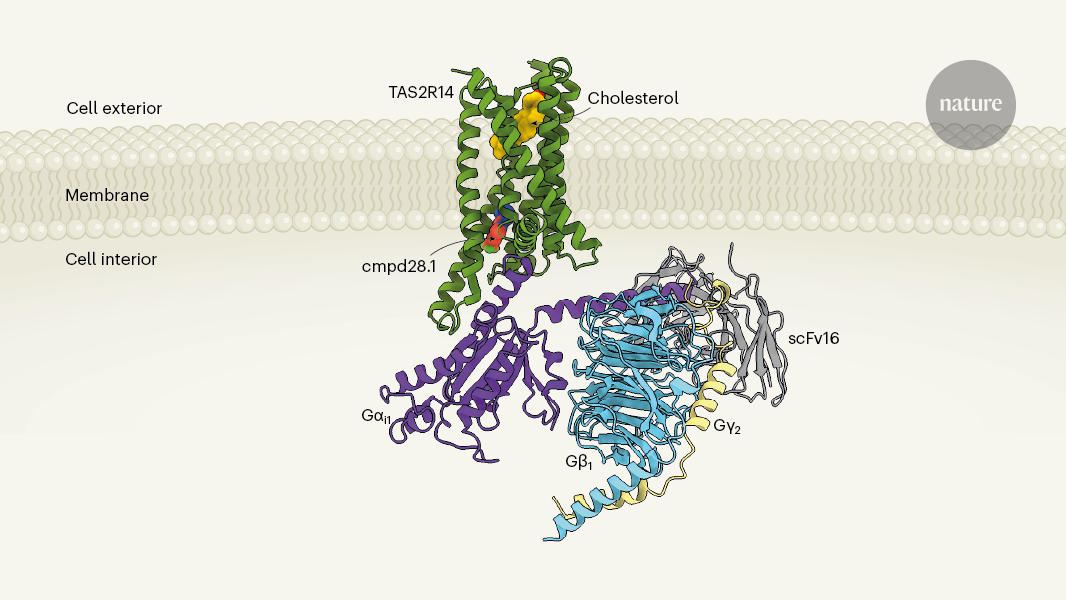Cryo-Electron Microscopy Reveals Molecular Mechanisms of Bitter Taste Receptor Activation
The article discusses a breakthrough in understanding the molecular mechanisms of bitter taste receptor activation. It reports the cryo-electron microscopy structures of the human bitter taste receptor TAS2R14, which provide important insights:
-
The human bitter taste receptor TAS2R14 can recognize more than 1,000 diverse bitter-tasting compounds through a repertoire of 26 membrane proteins called type-2 taste receptors (TAS2Rs).
-
Previous understanding of how these chemically diverse compounds activate these receptors at the molecular level has been limited due to a lack of structural data for the receptors.
-
The new cryo-electron microscopy structures of TAS2R14 suggest that different bitter compounds modulate the receptor's function at two distinct regions of the receptor.
-
Dual binding of bitter compounds at these two regions leads to complete activation of the bitter taste receptor.
-
These structural insights advance the field's understanding of how chemically diverse bitter compounds are recognized and activate the human bitter taste receptors at the molecular level.
Customize Summary
Rewrite with AI
Generate Citations
Translate Source
To Another Language
Generate MindMap
from source content
Visit Source
www.nature.com
A bitter-taste receptor activated in a surprising way
Önemli Bilgiler Şuradan Elde Edildi
by Antonella Di... : www.nature.com 04-10-2024
https://www.nature.com/articles/d41586-024-00712-6
Daha Derin Sorular
